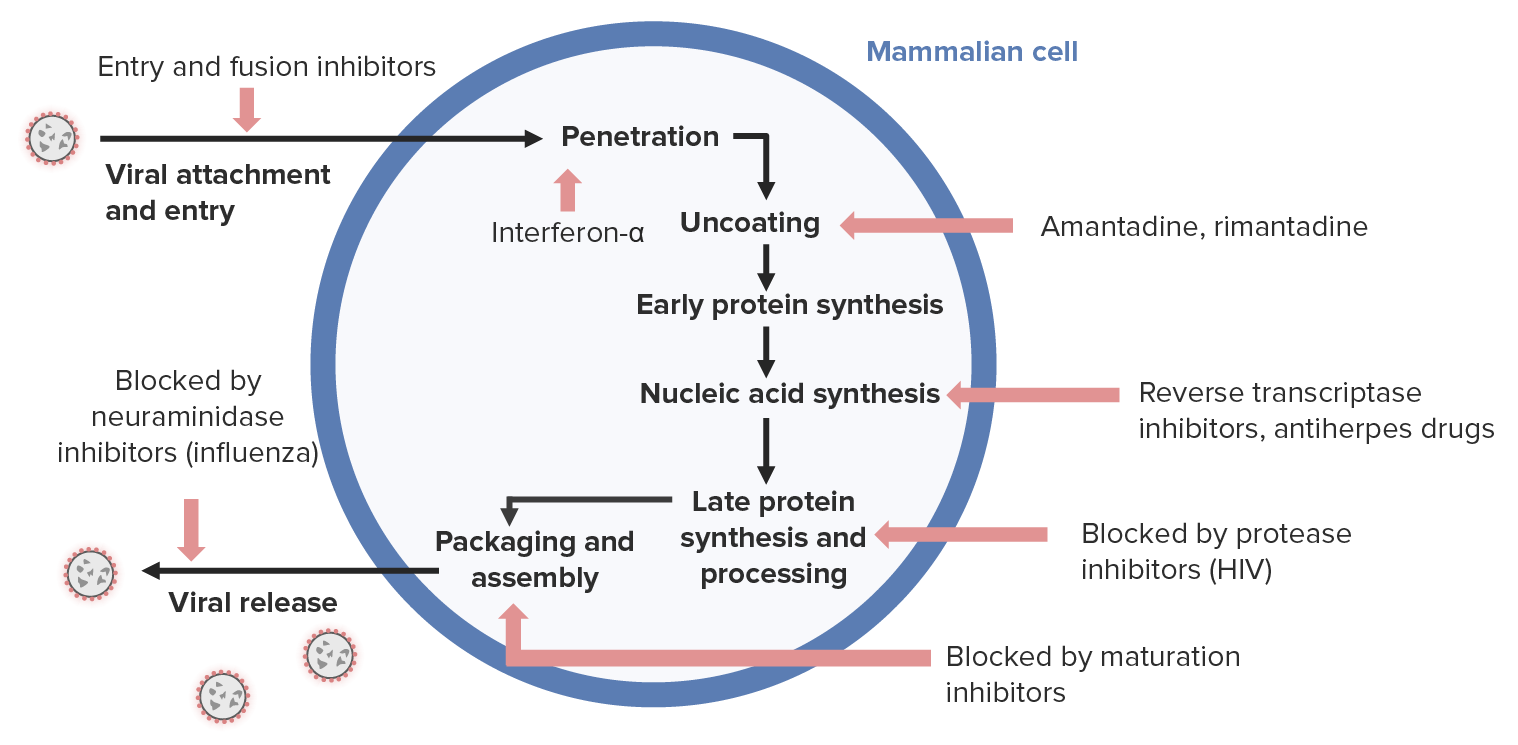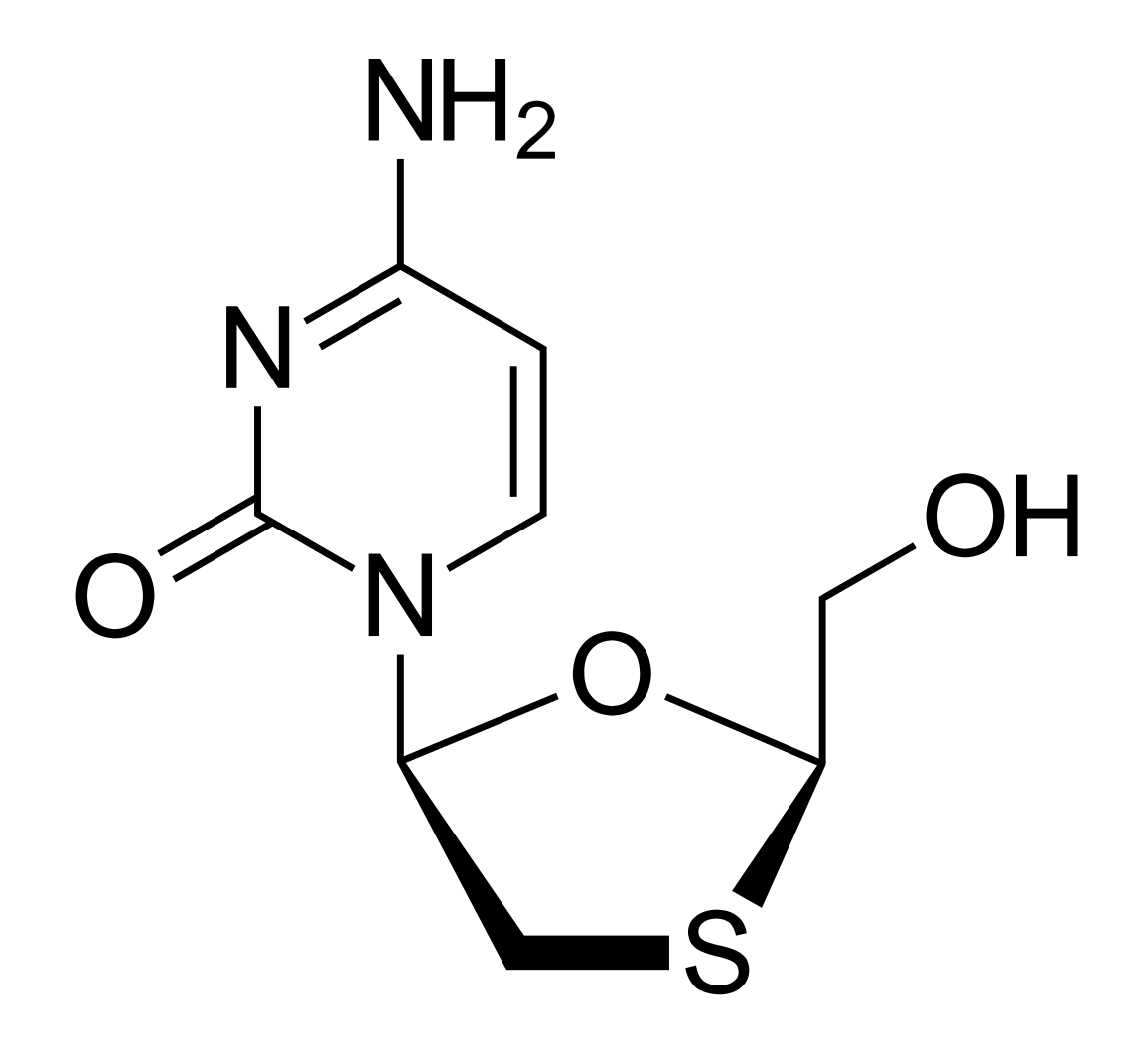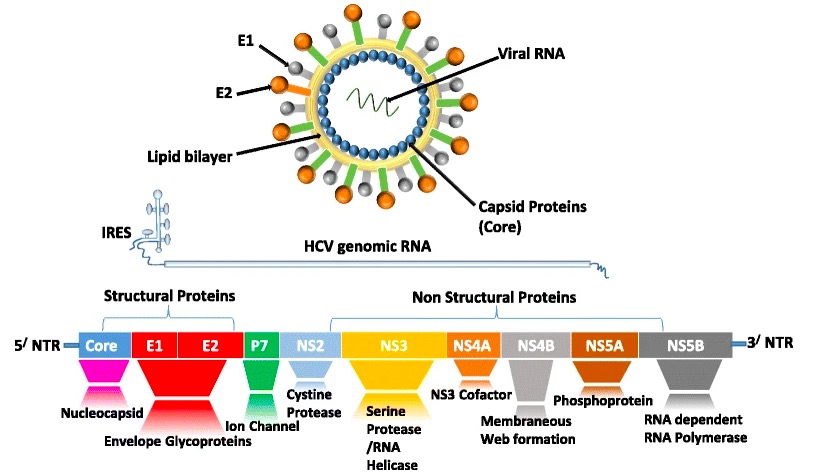Playlist
Show Playlist
Hide Playlist
Case Studies – Antiviral Drugs
-
Slide Case Study Antiviral Drugs.pdf
-
Reference List Pharmacology.pdf
-
Download Lecture Overview
00:01 Let's move on to some questions. 00:03 A 42-year-old woman with chronic hepatitis B virus (HBV) infection is considering treatment options. She desires a finite duration of therapy and prefers not to be on long-term medication. Her HBV genotype is A, and she is hepatitis B e antigen (HBeAg) positive. Which of the following treatments is most suitable for this patient? A. Lamivudine, B. Tenofovir, C. Entecavir, D. Pegylated interferon (PegIFN), E. Adefovir Fantastic, you picked D. Pegylated interferon (PegIFN) is the most suitable treatment for this patient because it is typically administered for a finite duration (usually 48 weeks). Although interferon may be preferred in selected cases (such as children or those who don't want long-term therapy), nucleotide or nucleoside analogs are generally preferred over interferon therapy for chronic hepatitis B due to their better tolerability, fewer severe side effects, and suitability for a broader range of patients, while IFN therapy is associated with significant adverse effects such as flu-like symptoms, psychiatric issues, and bone marrow suppression. 01:19 The choice of PegIFN should be individualized and carefully discussed with patients, weighing their preference for finite therapy against potential side effects. Regarding the other answer options, lamivudine is a nucleotide analog used to treat chronic HBV infection. However, it has a higher risk of developing drug resistance and typically requires long-term therapy to maintain viral suppression. It is less suitable for patients desiring a finite duration of treatment. Therefore, lamivudine is not the best option for this patient. 01:52 Tenofovir, another nucleotide analog, is highly effective and associated with a low risk of resistance. However, like lamivudine, tenofovir usually requires long-term therapy to maintain viral suppression and is not typically used for finite treatment durations. Thus, it is not the most suitable choice for a patient who prefers a short-term treatment plan. 02:13 Entecavir is a potent nucleoside analog with a low risk of resistance, similar to tenofovir. While effective, it also generally requires long-term therapy to maintain viral suppression, making it less suitable for patients who wish to avoid long-term treatment. Therefore, it is not the best option for this patient. 02:33 Adefovir is another nucleoside analog, but it is less potent than tenofovir or entecavir and also requires long-term therapy to maintain viral suppression. It is not commonly used as a first-line treatment today due to its lower efficacy and the potential for renal toxicity. Thus, it is not a suitable choice for this patient, especially given her preference for a finite treatment duration. 02:57 A 34-year-old male presents to the clinic within 36 hours of the onset of flu-like symptoms. He tests positive for influenza A by the rapid influenza diagnostic test (RIDT), which detects viral antigens in respiratory specimens. He has no significant medical history and requests antiviral treatment. 03:18 Which of the following is the most important factor in ensuring the efficacy of antiviral therapy for influenza in this patient? A. Patient's age, B. Timing of antiviral initiation, C. Type of influenza virus (A or B), D. Presence of underlying conditions, E. Patient's vaccination status The correct answer is B, Timing of antiviral initiation. Timing is the most critical factor in the efficacy of antiviral treatment for influenza. Antiviral agents are most effective when started within 48 hours of symptom onset, reducing illness severity and duration, though they may still provide benefit if started later in severe cases. A is incorrect since age can influence the severity of influenza and the potential for complications but it is not the primary determinant of the efficacy of antiviral therapy. 04:16 Antiviral medications are effective across all age groups, but their efficacy is most dependent on how quickly they are administered after the onset of symptoms. 04:26 C is incorrect because both influenza A and B generally respond to the same antiviral medications, and the prompt initiation of treatment remains the most important factor for efficacy. 04:36 D is incorrect because even if underlying conditions can increase the risk of severe influenza and complications, they do not directly influence the efficacy of the treatment itself, which is primarily dependent on timely initiation. 04:48 E is incorrect because once a patient is infected, the effectiveness of antiviral therapy is primarily determined by how quickly treatment is initiated, not by whether the patient was vaccinated. Vaccination status is important for preventing influenza and reducing the severity of the disease if contracted. 05:07 Let's go on to another question. 05:10 A 34 year old male represents with a painful left eye. 05:13 He has a loss of vision in the left visual field. 05:17 The funduscopic image is displayed on the following slide. 05:21 So there you have the funuscopic image. 05:24 Now let's take a look at our choices here. 05:28 The appropriate treatment for this patient would be A. Valganciclovir 900 mg orally twice a day for 21 days and then once a day. 05:39 B. An intravitreal injection of ganciclovir or foscarnet over 7 to 10 days, then valganciclovir 900 mg twice a day for 21 days or resolution. 05:53 C. Ganciclovir 5mg per kilogram intravenous every 12 hours for 21 days. 06:01 Or D. Oral valganciclovir 900 mg twice a daily for 7 days. 06:09 Which is the right choice? You chose B. 06:15 The intravitreal injection of ganciclovir or foscarnet over 7 to 10 days, then oral valganciclovir 900 mg twice daily for 21 days or until resolution. 06:28 Now for some reason, this type of question always shows up on boards. 06:35 I've seen it when I was doing my undergraduate exams, it showed up again for my licensing exams, it showed up again for my internal medicine boards, and it showed up once again for my recertification exams. So we see it over and over and over again in multiple exam formats. So exam boards love CMV retinitis. 06:54 It's a very good disease to know. 06:56 Now remember that this patient is having a retinitis that is threatening his optic nerve, he has loss of vision, so it's very important to know that systemic therapy is not enough in this situation. 07:09 So we want to give an intravitreal injection of a strong antiviral like ganciclovir, and we give it usually every second day for 7 to 10 days. It's followed then by systemic therapy. So that's where oral ganciclovir can be used for 21 days, or alternatively we can use venous ganciclovir for 21 days too. Now, treatment is obviously under an eye specialist. This is not something that we manage in a general practitioner's clinic. Now, we also have something called ganciclovir intraocular implants. These are teeny tiny little pledgets that are very hard to see with a naked eye and they're inserted inside the vitreal cavity or beside the vitreal cavity and those are obviously put in by an eye surgeon as well. Those are very very effective too for CMV retinitis. That's it for our questions I'm sure you're going to do really well. 08:04 Show them what you know.
About the Lecture
The lecture Case Studies – Antiviral Drugs by Pravin Shukle, MD is from the course Antimicrobial Pharmacology.
Included Quiz Questions
After how many hours or weeks from symptom onset is anti-influenza medication no longer considered to be effective?
- 48 hours
- 24 hours
- 72 hours
- 1 week
- 2 weeks
Which statement is correct regarding the management of CMV retinitis?
- Systemic therapy would not be enough in most cases of CMV retinitis.
- Acyclovir is the drug of choice for induction therapy of CMV retinitis.
- Treatment should be administered as soon as possible, given the high risk of retinal artery occlusion.
- CMV retinitis is an ophthalmic emergency and requires urgent surgical intervention.
- Treatment with IV ganciclovir lasts 3 days.
Which of the following is the primary reason why nucleotide or nucleoside analogs are generally preferred over interferon therapy for chronic hepatitis B?
- Nucleotide/nucleoside analogs are better tolerated and have fewer severe side effects.
- Nucleotide/nucleoside analogs require shorter treatment duration.
- Nucleotide/nucleoside analogs have a higher resistance profile. .
- Interferon is more effective in all patient populations.
- Interferon is recommended only for patients with severe liver disease.
Customer reviews
5,0 of 5 stars
| 5 Stars |
|
5 |
| 4 Stars |
|
0 |
| 3 Stars |
|
0 |
| 2 Stars |
|
0 |
| 1 Star |
|
0 |








